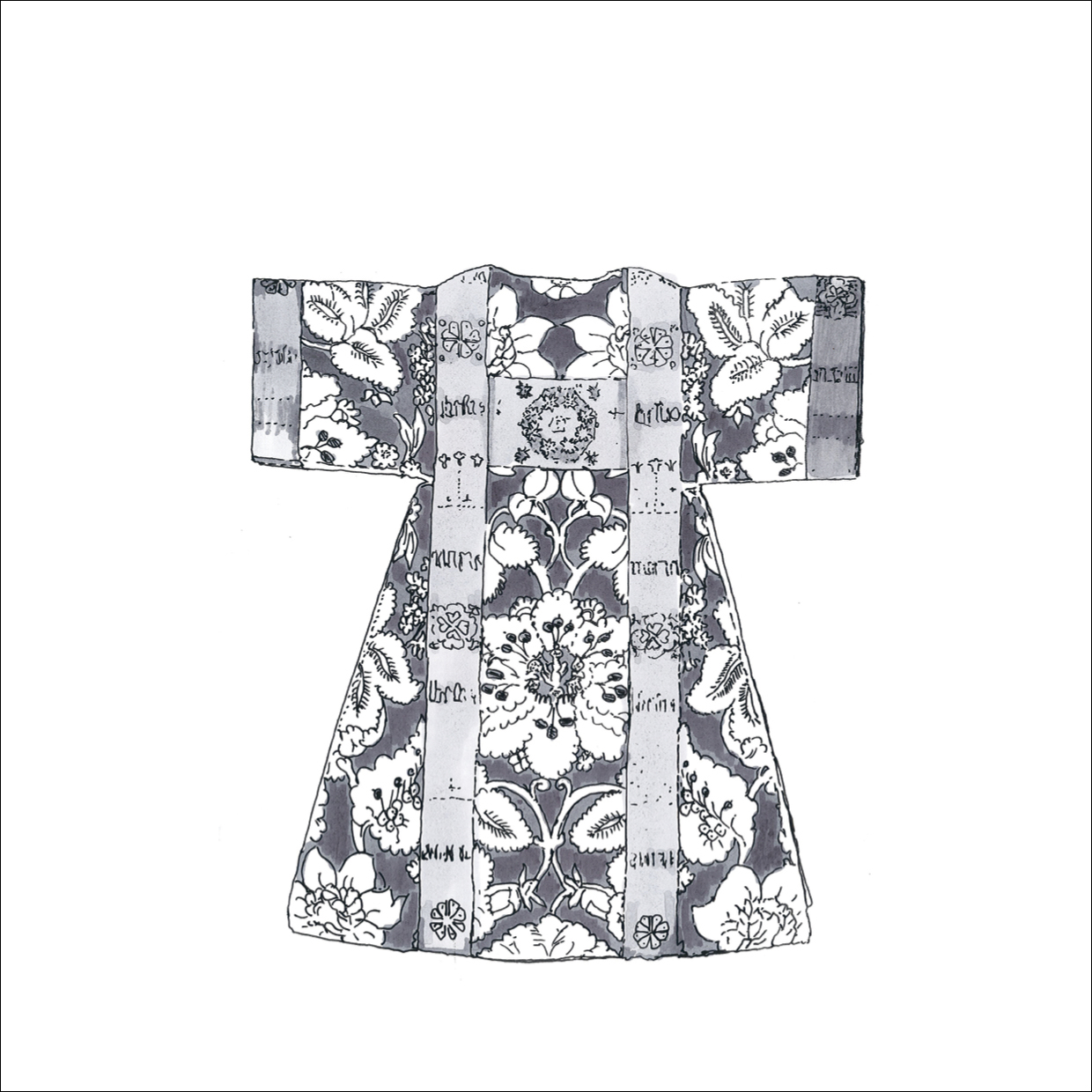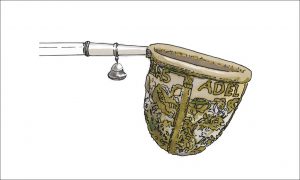by Charlotta Hanner Nordstrand*
The production of the Swedish Church Objects Lexicon was initiated at the Department of Conservation, University of Gothenburg in 2010, financed by the state and the Swedish Church and realized in spring 2015. It was published in print by Skara Stiftshistoriska Sällskap and available online as a pdf

The project started up as an offspring from the course Kyrkostudier, Church studies, given by the Department of Conservation during many years. In the course the students together with the course teachers spend days documenting exteriors and interiors of different churches. The church congregations have always been helpful in opening their buildings and archives for the documentation project.
During the work difficulties to identify objects in a church occurred and the idea of producing a church objects lexicon awakened. As the leader of the course I started to take photos of the different church objects and these photos was my starting point for the lexicon studies.
The lexicon is the first of its kind; it compiles all cultural historical and liturgical objects in a church belonging to the Swedish reformed church. In all 504 object terms are explained. The items are organised in 24 classes according to the classification system often used by the Swedish Church and the Swedish National Heritage Board (RAÄ), KSAK. Of the 504 item terms 130 are cross-references. Every term is explained by specialists; art historians, textile and paper conservators, church antiquarians and a priest. The explanations are illustrated with drawn illustrations based on photos of real objects still in use in Swedish churches. Only some of the definite Roman Catholic items such as monstrances, censers and chests of Christ are nowadays not in use in the Swedish Church, instead they are kept in museums.
Of the 24 classes the most comprehensive is the liturgical textile class including 65 different types of items. Of the rest, 13 classes include more than 12 types of items, these are altars (40), books and documents (44), grave memorials (34), communion vessels (20), art objects (34), candlesticks and lamps (27), baptismal items (18), benches (19), altar decorations (19), organs and other music instruments (12), pulpits (12), övrigt – other things (35) and 38 different types of crosses. Of the 24 headings only six includes less than 10 different types of items.
The establishment of the Church in Sweden
The western Catholic Church established itself in Scandinavia and within the actual Swedish borders in the 9th century but the Christianization process was not completed until the 13-14th centuries. In medieval Sweden there were as many as 50 cloisters and convents and more than 1500 churches. The Lutheran reformation in 1527 put an end to the Roman Catholic tradition and the monasteries were all closed and destroyed and liturgical vessels of silver and gold, manuscripts and church bells were taken by King Gustav Vasa and his sons before the end of the 16th century. The church afterwards were part of the state until the separation in year 2000.
Anyhow, there was no big iconoclasm accompanying this new interpretation of Christianity. The mass of the peasant people in Sweden were traditional and did not approve to drastic changes in their churches. As example written sources prove that at least in some parts of Sweden people worshipped the Madonna sculptures up to the early 1800th century.
But 250 years after the reformation most of the sculptured saints, Madonna’s and Triumphal crucifixes as well as reliquaries and censers, had been thrown away and replaced by items without Roman Catholic connotation such as statues of angels and copies of the resurrected Christ by Berthel Thorvaldsen.

In the first part of the 2000th century, the secularization in Sweden escalated. But by that time remaining Catholic medieval sculptures of Lady Mary, saints, medieval altarpieces and baptismal fonts had returned to the churches thanks to antiquarian restoration activities. They were not always put in their original places, but visible and admired as decorative art pieces.
So what then about the holiness and purity inherent in the old sacred objects? In the modern Swedish church there is no consensus concerning this question. It could perhaps be agreed upon that the altar, the sacred vessels and other object related to the Holy Mass embody holiness. Anyhow they ought to be respectfully handled because of their sacred history. It is obvious that also f. eks. the Grave of Christ (Kristi grav, påskkista), the monstrance and censors were holy items during the long Roman Catholic period in Sweden.
Another aspect of holiness is the fact that the liturgical items as well as the church room are secluded from the outside world. When the priest and the congregation meet in the church they communicate with the liturgical items, sculptures, textiles, candles and paintings.
Bibliography:
Kyrkans föremål : beskrivande lexikon / texts: Charlotta Hanner Nordstrand, Gunnel Berggrén, Joakim Hansson och Fanny Stenback ; drawings: Maria Henje, Lotta Möller ; layout and text edition: Lotta Möller ; Project leader: Charlotta Hanner Nordstrand. Publ.: Skara Stiftshistoriska sällskap & Göteborgs universitet, 2015. – ISBN: 9789186681289
* PhD Charlotta Hanner Nordstrand is ass. Professor at the Department of Conservation, University of Gothenburg, Sweden. As being an art historian she completed her thesis about 1900th century Art Life in Gothenburg in 2000 and through the research found the existence of several unknown women artists. Her main research fields are women’s artists and religious art and architecture, for eks. Early Christian architecture in Syria. She has been employed by the Department of Conservation since 1979.





Follow us: